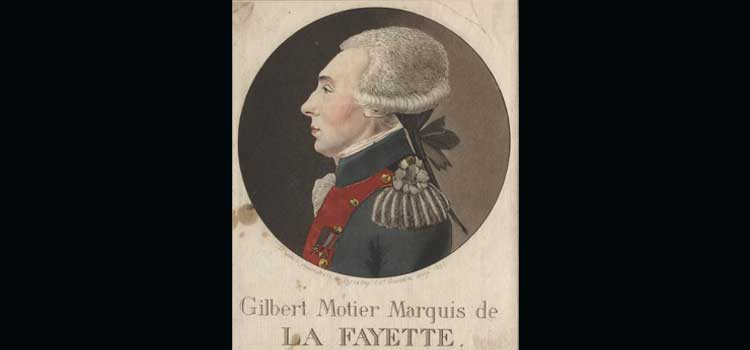When Lafayette returned from France in 1780, he walked right into the final major phase of the American Revolution and his adoptive father, George Washington, was going to ensure he played a major role. Washington sent Lafayette south to Virginia without telling him the big secret of his mission: Washington wanted to win the war in the south and Lafayette would be his weapon.
Lafayette was still showing his trademark good and bad traits. He overextended himself in a battle with Lord Cornwallis but escaped. He also showed his unparalleled tenacity. Cornwallis started moving towards the coast in order to link up with the British navy. As he marched to the sea, Lafayette constantly attacked his rear guard and retreated. These tactics annoyed Cornwallis something fierce (he called Lafayette “the boy”), but also created a very important illusion. Americans along the route started to believe Lafayette was actually chasing Cornwallis to the ocean. Enlistments started to soar as people wanted to be part of the winning effort.
Cornwallis arrived at Yorktown and was hemmed in by Lafayette. The Siege of Yorktown began and became a clear-cut victory when the French navy defeated the British navy at the Battle of the Capes. Cornwallis lost all of his support and knew his fate was inevitable.
Lafayette took one more visible role at the surrender. When the British troops marched out, they refused to look at the American side and instead faced the French forces. Lafayette became enraged and had the band play Yankee Doodle as loud as possible. They did and the British needed to turn away and look at the American forces to deal with the noise.
Lafayette returned to France afterwards to continue pushing to end the war and would ultimately take part in the final peace negotiations.
The final coda to Lafayette’s American odyssey occurred in 1824. He returned as one of the final links to the revolution to take a tour of his adoptive country. The tour was supposed to be 4 months long and became 16 months because he was mobbed wherever he went. It is hard to overstate just how beloved he was back then. Now, I mention his name and get blank stares most of the time.
History is weird.
(Check out all parts of my take on the life of the Marquis during the Revolution. Part 1. Part 2. Part 3. Part 4. Part 5.)
For more:
https://en.wikipedia.org/wiki/Gilbert_du_Motier,_Marquis_de_Lafayette


Leave a Reply
You must be logged in to post a comment.